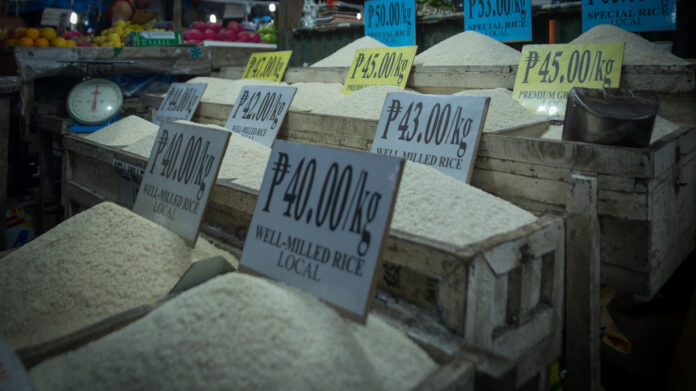The Department of Agriculture (DA) on Wednesday expressed optimism that the deflation in rice prices seen in January will continue, thanks to strategic measures the government has taken to stabilize the cost of the staple.
DA secretary Francisco Tiu Laurel Jr. hailed the development as a “step in the right direction,” noting that rice inflation in January dropped to minus 2.3 percent year-on-year and was down 0.9 percent from December 2024. This price deflation helped keep the overall inflation rate steady at 2.9 percent for the month, providing much-needed relief to households struggling with rising food costs.
According to the Philippine Statistics Authority (PSA), this marks the lowest price inflation since June 2020, with prices trending downward—a shift that could continue until July 2025, based on current trends. January’s rice price deflation was the first since a 0.1 percent decline in December 2021, underscoring the effectiveness of government interventions.
Secretary Laurel attributed the improvement to the efforts of President Ferdinand Marcos Jr., particularly the sharp reduction in rice import tariffs last year. The tariff reduction from 35 percent to 15 percent, along with government programs such as the Kadiwa rolling stores, have been instrumental in lowering retail rice prices and mitigating supply shortages.
The DA also pointed to other significant steps taken to further control rice prices, including lowering the suggested retail price of imported rice from P58 per kg to P55 per kg. Additionally, the declaration of a food security emergency allowed the release of National Food Authority (NFA) rice stocks at P35 per kg through government channels, providing more affordable rice options for consumers.
While rice prices are now under control, the DA is also focusing on monitoring the prices of other food items, particularly pork, to prevent any further price hikes that could jeopardize food security and inflation goals.
As of this week, retail prices for local well-milled rice in Metro Manila ranged from P42 to P52 per kg, while imported well-milled rice sold for P44 to P45 per kg. Premium and special varieties of rice were priced higher, with imported special rice reaching up to P60 per kg.
For consumers, this deflation offers a welcome respite, especially as rice remains a cornerstone of the Filipino diet. For the economy, the stabilizing effect on rice prices helps keep inflation manageable, ensuring that the government’s commitment to food security and economic stability continues to bear fruit.







